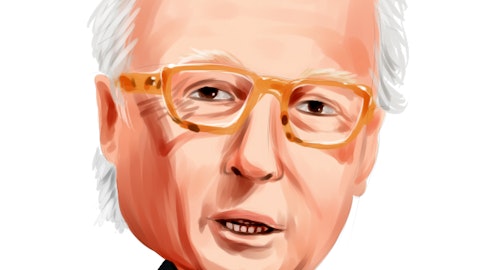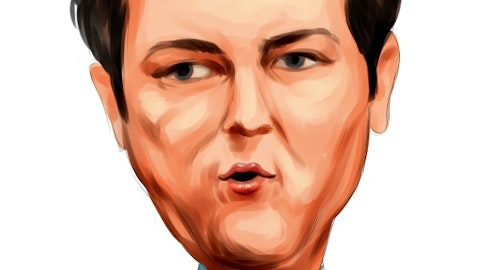Andrew Wolf: Got it. And just one other question, really on capital allocation which – first of all, you reported a pretty big increase in cash capital expenditures, kind of seems to comport with your pretty aggressive plans for seven new lines. But can you kind of express to us what your capital budget is for the year and how you know, what you think you might be spending to invest back in the business? And the other side is the M&A that you alluded to. I guess my question, there’s more balance sheet related you know how much debt leverage – is the Board and the executive committee willing to take on to, to execute a deal? Thank you.
Ken Plunk: Yes, I mean appreciate the question, Andrew. Again, we feel really good about where we’re at in terms of the ability to continue, invest in the business. But to your point as it relates to changes in debt. Yes, you saw on the balance sheet? Yes I think, almost double capital spend for the quarter versus a year ago. We’ve been very clear that we’re investing close to $100 million in seven new lines and these new RDC. So obviously, that’s going to drive, you know, increases in CapEx versus, you know, two, three years ago. You’ll see that I think the number was just South of $90 million that we spent in fiscal 2022. CapEx as we continue to execute these investments that we’re making, you know, the 2023 number is going to be probably in that range.
I’d say $90 million to $105 million somewhere in there. And it’s really all focused on completing the execution of those key production lines and RDC investments that we’re making. In terms of leverage with the Board, yes I wouldn’t say there’s an exact number that we’ve kind of landed on with the Board of what we’re willing to do. We’re evolving as a company. We moved from really no debt, to start seeing that we can leverage our balance sheet now to go and grow this business and invest and I think the Board is supportive of that. But I can’t say that there’s a specific leverage number that we’ve kind of got in mind at this point.
Andrew Wolf: Okay, thank you. I’ll pass it on appreciate it.
Dan Fachner: Thanks Andrew
Ken Plunk: Thanks Andrew
Operator: Thank you. Our next question or comment comes from the line of Todd Brooks from Benchmark Company. Mr. Brooks, your line is now open.
Dan Fachner: Good morning, Todd.
Todd Brooks: Few quick questions for you, first of all on Dippin’ Dots. Obviously, with the seasonality of the business, is there a way that you can size for us so that we can gauge kind of the operating income trend outside of the Dippin’ Dots impact what the – drag on operating income was in the first quarter from Dippin’ Dots?
Ken Plunk: Yes, hi Todd, this is Ken. I think in last quarters, we had kind of tried to guide the group that you know, almost all – you can call it 100% of the profitability of dividends in q3 and q4 again, no surprise, given the seasonality in that business. Q1 is the slowest and it has a negative impact. You know, I think you’ll see this spelled out in the 10-Q just south of $1 million negative impact in this quarter from Dippin’ Dots. And that’s Dippin’ Dots actually had a great quarter and performed above expectations, but that’s the weight of fixed expenses and high SG&A based on a low sales base, creates a deleveraging in Q1, that was certainly expected on our side. But that gives you a little bit around idea of kind of what that impact was in this quarter.




